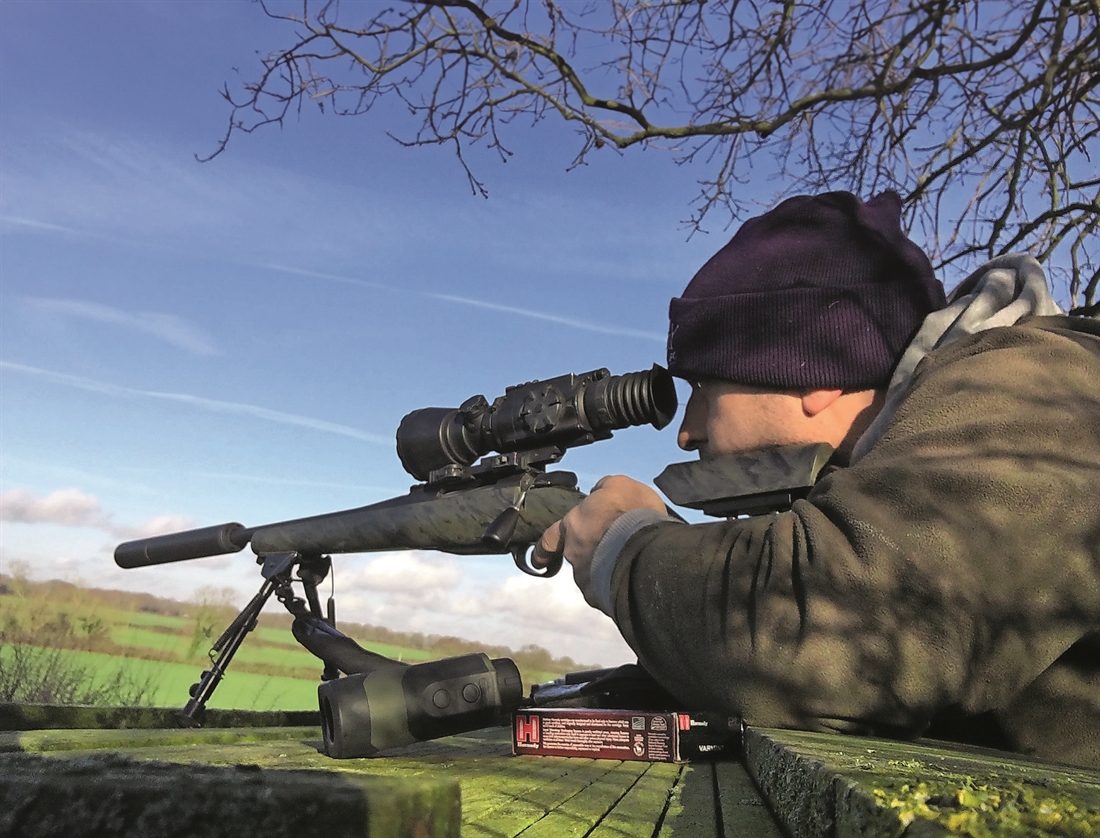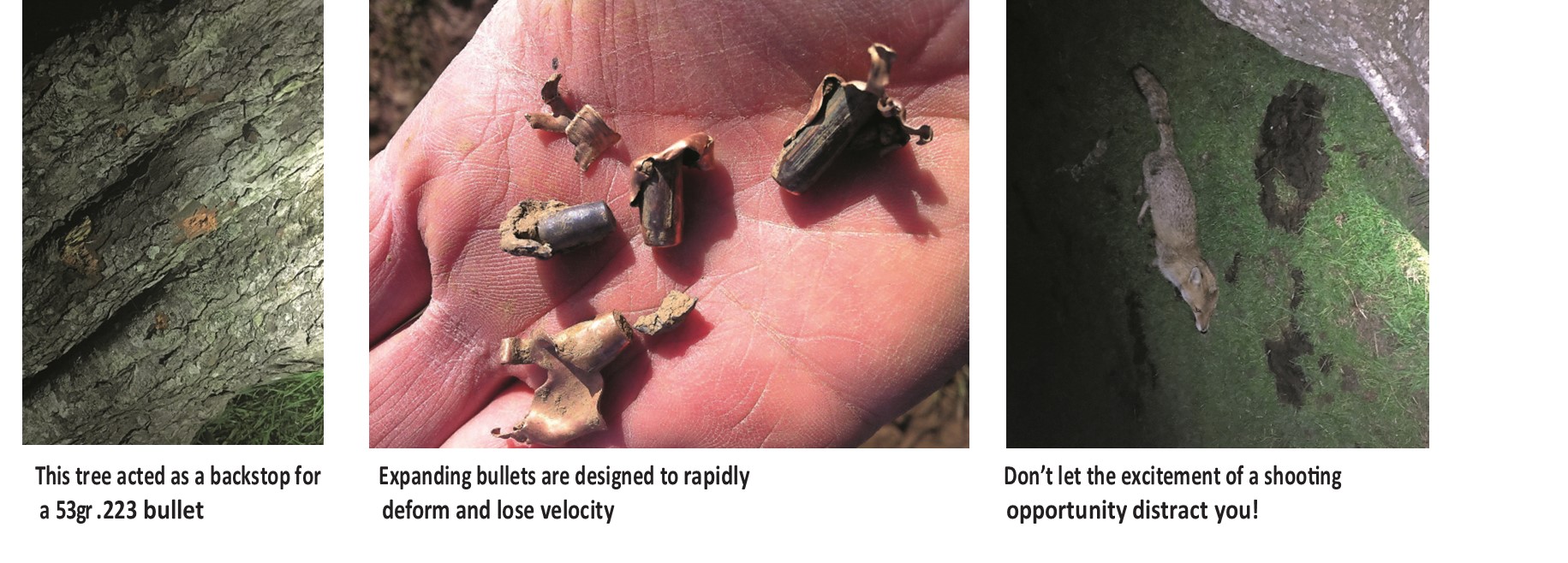Unintended consequences
What happens after a bullet leaves a gun? Can you always be sure? Mark Ripley explores the need for certainty whenever you go out with rifle in hand.

It was a beautiful sunny morning in the summer of 1967, and the story goes that a man went out to sail his fishing boat across Brooklyn’s Sheepshead Bay, looking forward to a well-earned day going after bluefish.
When he had purchased the boat, the previous owner had thrown in an old Lee Enfield .303 rifle to sweeten the deal. With the sun warming his face as he gently bobbed to the sea’s gentle touch, the rifle in the corner of the cabin caught his eye and he wondered how well the old relic would shoot.
A buoy floating 20yd out looked like a suitable target and, chambering a round, he squeezed off a shot. It was an easy target and a second round also easily found its mark. Getting into the swing of things, he looked for a more challenging target. There, bobbing on the water a little further out, was a beer can. Perfect.
Timing his shot with the sway of the boat, he squeezed the trigger and sent the bullet on its way. The bullet narrowly missed the can and kicked up a splash of water.
Having had enough shooting, he returned the rifle to its corner before leaning back in his boat and tipping his hat to keep the sun from his eyes. Little did he know that a short while later he would be accused of tragically taking the life of 17-year-old Nancy McEwen, who was driving over a mile away.
Deadly bounce
Because of the shallow angle, that third shot had apparently bounced off the water like a skimmed stone and travelled across Sheepshead Bay, over reed beds and marshes, over a car park, and across half of the Belt Parkway and its central reservation before tragedy struck.
As Nancy drove her Camaro sports car at 45mph towards her summer job, the bullet, nearing the end of its trajectory, passed through her open rear window (had it been closed, the bullet wouldn’t have had the energy to break the glass) before striking the teenager behind the left ear through her long blonde hair.
Her car drifted slowly across the lanes of traffic before crunching to a stop in the bushes by the side of the road. Nancy was found unconscious and died on her way to hospital with nothing but a small bloodless puncture wound behind the ear. No murder charges were brought, although the shooter was fined US$100 for violating firearms laws.
Fortunately we have a very good track record for firearm safety in the UK, but that’s no reason to think you know everything and you are Mr or Mrs Safe 100% of the time. The fact is that anyone who shoots a lot will at some time most likely fire a shot that they realise probably shouldn’t have been taken.
Or words a little stronger. It’s very easy to be too focused on that beautiful fallow buck standing by the wood, or the running fox that’s stopped against the hedge for a last look back. There’s never going to be anyone walking in that wood at this hour – is there?
Some years ago an FEO told me of a shooting incident he was looking into on his patch. A couple were sitting in their car late one night when a .243 bullet cracked through the hedge next to them, smashed the driver’s side window, narrowly missed the head rest and embedded itself in the passenger door pillar.
The height at which the bullet hit the car suggested that the intended target was possibly a deer being illegally poached at night, as no one had permission for the ground in question and no one was ever prosecuted to my knowledge.
Backstop
Something that’s drummed into us from the start is that we always need a good backstop when shooting a rifle – but what is a good backstop? To begin with you need to be able to see a good bit of ground or something solid above the back of your quarry so that if you miss, the bullet will hit that and not just thin air. Your quarry can’t be relied upon to retain the bullet, which is highly likely to pass straight through.
A bullet has the ability to bounce off almost anything, but you can minimise that risk in several ways. Shooting from an elevated position, such as from a high seat or the back of a 4×4, will increase the angle at which the bullet meets the ground, either helping to drive it in or reducing its velocity should it ricochet. A rising bank or slope in the ground works the same way.
You also need to be aware of the type of ground you are shooting on. Soft marshlands, muddy fields and freshly ploughed earth make an easy surface for a bullet to burrow into, whereas hard sun-baked earth or frozen ground can easily send your bullet in an unwanted direction.
Fortunately the vast majority of us will be using expanding ammunition, which is designed to deform rapidly to cause maximum damage to our quarry. This means that once the bullet has hit an animal or object it will be far less streamlined and possibly tumbling, which will quickly reduce its velocity.
I recently shot a fox at around 100yd using a .223 with 53gr bullets. As the fox was on a fairly flat bit of field and I was shooting from sticks, I chose to wait until it passed the base
of a tree before calling out to stop it. As it happened, the fox obligingly decided to sit down in front of the tree to see what I was.
The shot was good and, as expected, passed through the fox. On inspection, although there appeared to be a single exit wound, the tree stump a few feet behind told a different story. The bullet had broken up well on impact and peppered the tree with several bullet fragments, all no doubt deformed, tumbling and losing energy although still capable of serious damage.
Light bullets travelling very fast, such as the .17 HMR, are the least likely to ricochet and tend to break up on impact. The subsonic .22 LR, however, is a relatively bouncy little thing at every given opportunity with its low speed and fairly hefty little lead bullet, making it potentially the most ‘dangerous’ rifle of all in this regard, as well as being the first rifle most of us will own.
Thankfully, the .22 rimfire with subsonic ammunition has a more limited range than a centrefire and is unlikely to travel more than a few hundred yards from a ricochet.
So what about shooting into the air? Is that safe? We often see news footage from foreign countries of people celebrating, firing guns into the air. The chances of these bullets hitting someone are unlikely in rural areas, but in urban areas it’s a real risk and has had recorded fatalities and numerous injuries, often miles from where the shots were fired!
A bullet fired vertically into the air could go 10,000ft up before coming back down, depending on the bullet/calibre, etc, and could still be falling at around 300fps (200mph). That’s easily enough speed and energy to cause injury and even death. With a slight deviation from vertical or wind drift, that bullet could come down two miles away, as it did in one tragic case in 2010 when a celebratory bullet came down through the roof of a church in Atlanta, Georgia, killing a four-year-old boy.
So never shoot a rifle in the air and be sure to take a moment to consider your shot before you fire. If you’re in doubt, you shouldn’t be taking the shot. Watch your backstops and stay safe.
Frangible bullets like a .17 HMR (left)
break up on impact. A subsonic .22 LR (right)
can be more prone to ricochets







